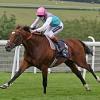This Covid thing made me go back on C60 olive oil, have been looking for an excuse to do so ever since 2015. I managed to convince myself my past experience was simply placebo oriented. But being back on 2ml/day with some fatty food is pretty amazing. My gym workouts don't give fatigue and can be redone almost daily, I usually get very tired for 2-5 days (might be bad for hormesis in the long run) and my experience of wine and the powerful UV-b lamp changed a lot (harder to burn or get drunk).
This time I started the C60 after already being on fairly large (5-20g ascorbic acid mixed with water/day) doses since several weeks.
Still the effects of C60 clearly arrived on top of that, so it has to do something profound.
My rationale for C60 is it has quite a few anti-viral effects (have not checked ) of the fullerens but mostly wanting to have a good bio-incorporated antioxidant on site in case the viral fever hits me. The autopsies are not done yet but when this thing clears up I am convinved we will find out there was a huge pro-oxidative rampage going on in vivo when Covid kills people or rips up the lungs. I can't believe so many hospitals just give people 1000mg C-vitamin, or a few grams IV-C if you are lucky, and call it a day.
It will be hard to stop taking it, this stamina and vitality I have missed so much!
Maybe the effects will decrease as I deplete some stem cells or something... This isn't the C60 thread so I will stop it here.
If you have a hammer every problem looks like a nail, I speculated about myo-inositol a few pages back and these guys do too.
New Therapeutic Perspectives in Counteracting IL-6 Storm ReleaseThese preliminary data support the hypoth-esis of a causative role of IL-6 in driving the in-flammatory response that leads to morbidity and mortality in patients with COVID-19 who develop acute respiratory distress syndrome. Therefore, it has been proposed that monoclonal antibodies targeting IL-6 or drugs able to downregulate IL-6 may be effective in blocking inflammatory storms, therefore representing a potential treatment for se-vere COVID 19 patients. Some promising, albeit unconfirmed, clinical results have shown that to-cilizumab, a specific inhibitor of IL-6 receptor68, can significantly improve oxygenation and clinical outcome of Sars-CoV-2 patients69. However, IL-6 has a role in both the innate and adaptive immune responses that protect the host from a variety of infections. Clinical studies of IL-6 inhibitors, spe-cifically tocilizumab, revealed that their use is as-sociated with an increased rate of both serious and opportunistic infections generally observed with other non-IL-6-directed biologic therapies70. High concentrations of inositol (or its deriva-tives) in surfactant preparations mitigate key in-flammatory pathways in inflammatory lung dis-ease71. Inositol and its metabolites also decrease pulmonary edema after lung injury72. In an ani-mal model of Ovarian hyperstimulation syndrome (OHSS) – a condition that in some instances can be characterized by life-threatening events, like acute respiratory distress syndrome (ARDS), hypovolemia, ascites, edema, and thrombosis73 – myo-Ins was able to counteract the main clinical features, while significantly reducing a number of inflammatory signatures, including Vascular per-meability, VEGF and COX-2 expressions74.Moreover, inositol specifically down-regulates IL-6 levels42, PI3K75 (a key factor in the transduc-tion of IL-6 signal), as well as many inflammatory parameters – like PGE and COX276 – downstream of PI3K activation in different diseases like cancer and polycystic Ovary Syndrome (PCOS). In this lat-ter condition, myo-Ins supplementation significantly reduces pro-inflammatory cytokines like IL-6 and p-STAT377. A general model has been proposed in which the chemo-protective effect of myo-Ins on lung functionality was directly linked to downregulation of IL-6 and modulation of the microenvironment
immune response78. Again, it should be stressed that myo-Ins administration – both through intravenous route and by oral supplementation – is almost com-pletely devoid of any significant adverse effect.Overall, these findings suggest that IL-6 is a major target of myo-Ins and raise the possibili-ty that Sars-CoV-2 patients with IL-6-driven in-flammation may benefit from myo-Ins treatment.Our laboratory already showed familiarity with the IL-6 release and the underlying mech-anisms that regulate it. Specifically, we showed that IL-6, as well as IL-1b, are epigenetically up-regulated by the hypomethylation of the gene pro-moter region in cell culture models and in human specimens from neurodegenerative disorders79-81. Unpublished preliminary results indicating that myo-Ins seems to exert epigenetic effects, suggest a possible mechanism of action in IL-6 regulation.Overall, these findings indicate that IL-6 is a major target of myo-inositol and raise the possi-bility that Sars-CoV-2 patients with a high level of IL-6-driven inflammation may show benefit from treatment with myo-inositol.
https://www.european...3426-3432-1.pdf
Quantitative Biology > Biomolecules[Submitted on 3 Apr 2020]In Silico Screening of Some Naturally Occurring Bioactive Compounds Predicts Potential Inhibitors against SARS-COV-2 (COVID-19) ProteaseSARS-COV-2 identified as COVID-19 in Wuhan city of China in the month of December, 2019 has now been declared as pandemic by World Health Organization whose transmission chain and cure both have emerged as a tough problem for the medical fraternity. The reports pertaining to the treatment of this pandemic are still lacking. We firmly believe that Nature itself provides a simple solution for any complicated problem created in it which motivated us to carry out In Silico investigations on some bioactive natural compounds reportedly found in the fruits and leaves of Anthocephalus Cadamba which is a miraculous plant found on the earth aiming to predict the potential inhibitors against aforesaid virus. Having modeled the ground state ligand structure of the such nine natural compounds applying density functional theory at B3LYP/631+G (d, p) level we have performed their molecular docking with SARS-COV-2 protease to calculate the binding affinity as well as to screen the binding at S-protein site during ligand-protein interactions. Out of these nine studied naturally occurring compounds; Oleanic Acid has been appeared to be potential inhibitor for COVID-19 followed by Ursolic Acid, IsoVallesiachotamine,Vallesiachotamine,Cadambine,Vincosamide-N-Oxide, Isodihydroamino-cadambine, Pentyle Ester of Chlorogenic Acid and D-Myo-Inositol. Hence these bioactive natural compounds or their structural analogs may be explored as anti-COVID19 drug agent which will be possessing the peculiar feature of cost-less synthesis and less or no side effect due to their natural occurrence. The solubility and solvent-effect related to the phytochemicals may be the point of concern. The In-vivo investigations on these proposed natural compounds or on their structural analogs are invited for designing and developing the potential medicine/vaccine for the treatment of COVID-19 pandemic.https://arxiv.org/abs/2004.01634
Hi,
Thanks for your answer,but I really don't think it's angina; I've had angina b4 I was placed on the BP medication,and the the symptoms were very different.
BTW, I'm in the Uk,and we only have ER,where you'd get the full works,or the GP offices where they don't keep much diagnostic equipment,but they're only talking on the phone to patients. Would a doc be able to diagnose fluid on the lungs without much equipment?
I don't think you should quit blood pressure meds. The data is inconclusive, here in Sweden they are saying it's possible those medicines will actually decrease mortality by quite a lot (3% on BP vs 10% without). I would add melatonin to your stack, it should not cause any damage whether it is the heart or the covid.
--
This might have been posted already. IIRC thats what melatonin does.
Kinins and Cytokines in COVID-19: A Comprehensive Pathophysiological Approach
Frank van de Veerdonk * ,
Mihai G. Netea ,
Marcel van Deuren ,
Jos W.M. van der Meer ,
Quirijn de Mast ,
Roger J. Bruggemann ,
Hans van der Hoeven
Version 1 : Received: 1 April 2020 / Approved: 3 April 2020 / Online: 3 April 2020 (04:13:43 CEST)How to cite: van de Veerdonk, F.; Netea, M.G.; van Deuren, M.; van der Meer, J.W.; de Mast, Q.; Bruggemann, R.J.; van der Hoeven, H. Kinins and Cytokines in COVID-19: A Comprehensive Pathophysiological Approach. Preprints 2020, 2020040023 (doi: 10.20944/preprints202004.0023.v1). van de Veerdonk, F.; Netea, M.G.; van Deuren, M.; van der Meer, J.W.; de Mast, Q.; Bruggemann, R.J.; van der Hoeven, H. Kinins and Cytokines in COVID-19: A Comprehensive Pathophysiological Approach. Preprints 2020, 2020040023 (doi: 10.20944/preprints202004.0023.v1).
Abstract
Most striking observations in COVID-19 patients are the hints on pulmonary edema (also seen on CT scans as ground glass opacities), dry cough, fluid restrictions to prevent more severe hypoxia, the huge PEEP that is needed while lungs are compliant, and the fact that anti-inflammatory therapies are not powerful enough to counter the severity of the disease. We propose that the severity of the disease and many deaths are due to a local vascular problem due to activation of B1 receptors on endothelial cells in the lungs. SARS-CoV-2 enters the cell via ACE2, a cell membrane bound molecule with enzymatic activity that next to its role in RAS is needed to inactivate des-Arg9 bradykinin, the potent ligand of the bradykinin receptor type 1 (B1). In contrast to bradykinin receptor 2 (B2), the B1 receptor on endothelial cells is upregulated by proinflammatory cytokines. Without ACE2 acting as a guardian to inactivate the ligands of B1, the lung environment is prone for local vascular leakage leading to angioedema. Angioedema is likely a feature already early in disease, and might explain the typical CT scans and the feeling of people that they drown. In some patients, this is followed by a clinical worsening of disease around day 9 due to the formation antibodies directed against the spike (S)-antigen of the corona-virus that binds to ACE2 that could contribute to disease by enhancement of local immune cell influx and proinflammatory cytokines leading to damage. In parallel, inflammation induces more B1 expression, and possibly via antibody-dependent enhancement of viral infection leading to continued ACE2 dysfunction in the lung because of persistence of the virus. In this viewpoint we propose that a bradykinin-dependent local lung angioedema via B1 and B2 receptors is an important feature of COVID-19, resulting in a very high number of ICU admissions. We propose that blocking the B1 and B2 receptors might have an ameliorating effect on disease caused by COVID-19. This kinin-dependent pulmonary edema is resistant to corticosteroids or adrenaline and should be targeted as long as the virus is present. In addition, this pathway might indirectly be responsive to anti-inflammatory agents or neutralizing strategies for the anti-S-antibody induced effects, but by itself is likely to be insufficient to reverse all the pulmonary edema. Moreover, we provide a suggestion of how to ventilate in the ICU in the context of this hypothesis.
Edited by Kalliste, 21 April 2020 - 03:56 AM.































 This topic is locked
This topic is locked























